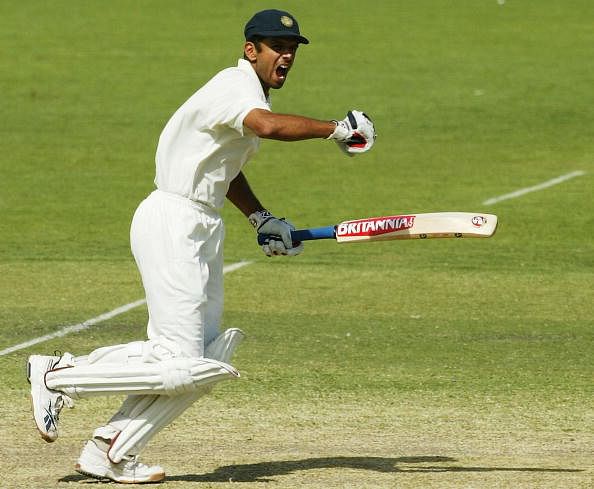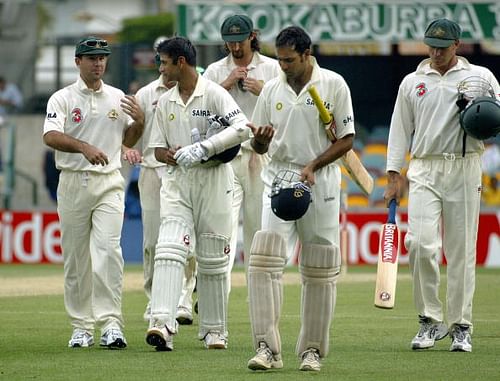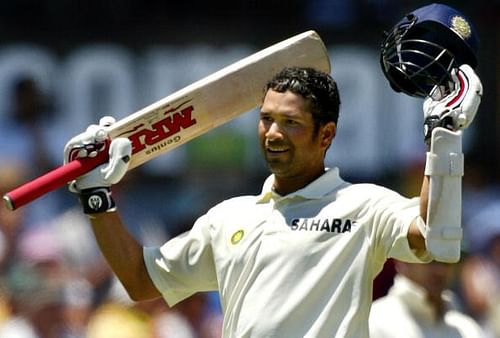
Memory Lanes: That tour Down Under

The clock was striking four on a typical lazy winter morning in India. The kind of day on which most alarms would have got snoozed if it was not for a Test match going on, oceans across at the Adelaide Oval. The stage was set. The Indian captain had scored a fighting century to ensure a draw in the first match at Brisbane, a result which was more than acceptable for the shaky tourists. A statement had been made with that century. ‘We can fight’ was the message. The Indian intentions were of something bigger than draw this time around, and consequently, the Adelaide Test was something the media and fans were desperately waiting for.
The second Test began as a one-sided contest, putting a lid to all the hype that preceded it. The first four sessions all belonged to the home side, as Indian bowlers helped Australia post a mammoth 556 on the scoreboard. Ricky Ponting smashed a 242, hitting Indian medium-pacers all over the park. Indians had their backs against the walls. The Indian batting had to rescue the side from the situation their bowlers had put them in. At 30/31, an age called to be the prime time for a batsman -Tendulkar, Ganguly, Dravid and Laxman were probably playing in their last Australian tour together. You had a feeling they would click, even if the pressure was mountainous. And they almost didn’t.
After a 66-run opening stand, the Indian batting line-up crumbled to 85/4 within a few overs, with all top four including Tendulkar and Ganguly back in the pavilion. The Dravid-Laxman partnership was the last hope for the tourists’ illustrious line-up. The pair went on to recreate the Eden magic, only this time the protagonist and the deuteragonist exchanging roles. Dravid played the best innings of his life against a ‘Gillespie, MacGill and in-form Bichel’ lead attack. A sublime 233, undoubtedly a magnum opus adorned with cuts, drives and pulls. ‘The Wall’ batted 594 minutes on Day 2 and 3, vindicating the sobriquet given to him. In an era where Dravid’s rise met Sachin’s fall, Rahul Dravid looked impermeable on the crease. There seemed no humane way, at times,to procure his wicket.

Laxman, the Picasso, meanwhile weaved wristy magic with some majestic pulls, scoring 148, an innings better than all but the 281. India went on to achieve one of its greatest overseas victories ever thanks to Agarkar’s spell; with the montage of Dravid hitting the winning runs becoming one of the most memorable scenes of Indian cricket. It wasn’t just a Test win. It was a statement. A statement that the Indian batting was not a nominal line-up gloating of statistics, but an aesthetic and impermeable line-up that could score runs on any surface against any line-up. Three members of the Fab Four had scored tons.
‘The wounded tiger is dangerous’. Australia turned the tables in Melbourne Test, out-batting the Indians again, with Ponting going on to better his 242 with a 257. Sehwag scored a quick 195, but only Dravid could make an impact as far as the Fab Four were concerned. Ganguly’s bat had gone quiet. Laxman failed in both innings. The pressure was back to India, and more precisely the spotlight was on Sachin Tendulkar, who was probably playing his last Test in Australia, which though didn’t turn out to be his last, years later. The Sydney Test was an emotional landmark for the Oz, as Steve Waugh had announced his retirement. The focus was on Waugh and Tendulkar, the two great men. And as they say, ‘Cometh the moment, cometh the man’, as both stole the limelight in their own ways, with the former hitting a double century and the latter knitting a match-saving 80. The Border-Gavaskar trophy was due for more grime-gathering, as it had remained intact in India after the series was drawn level. India had won the hearts. The fight from the tourists was not expected. And when David gives Goliath a run for its money, it is the spirit of the fight that impresses the audience the most.

The series was a landmark in Indian cricket. As a young cricket fan, I had a feeling that it was something that would define the subsequent years of Indian cricket. The Fab Four had all come good, at different times, when the team needed them. The series on one side marked the peak of Dravid and Laxman, and on other a start of the downfall of Ganguly’s own form. Tendulkar, one could see, had much more left ahead of him. One thing was sure after the tour; this was not the last tour Down Under for the Fab Four. Indian cricket was a hypothetical level-up.
In his blog years later, Aakash Chopra revealed that the motto of the tour was to ‘change the trend’, which they surely did…